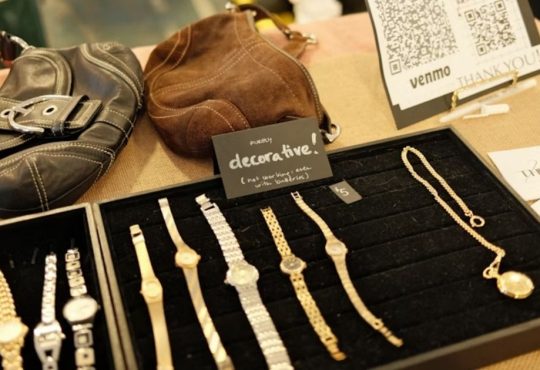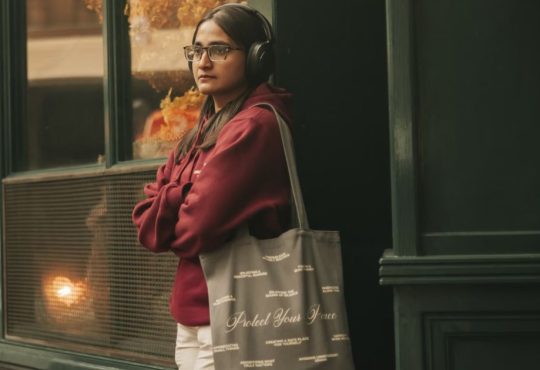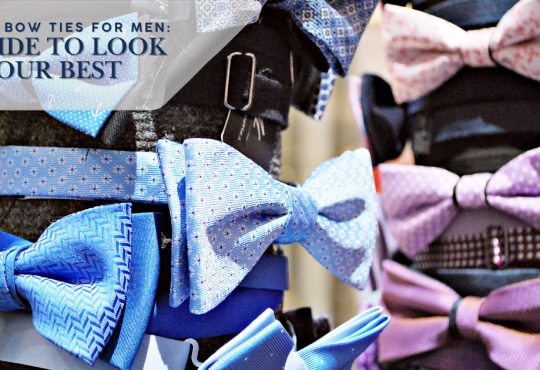As the world enters 2025, the luxury fashion industry is experiencing a renaissance that blends tradition with innovation. This year’s trends are notably shaped by a mix of cultural shifts, environmental concerns, technological advancements, and a desire for more meaningful, personalized expression. Fashion in 2025 is not just about looking good; it’s about feeling good, doing good, and fostering personal connections with the clothes that people wear. These emerging luxury fashion trends reflect a more profound shift towards sustainability, authenticity, and inclusivity, challenging the old norms and creating space for more dynamic and diverse expressions of luxury.
Fashion in the luxury sector has always been about more than just the clothes themselves; it reflects the values, desires, and ambitions of those who choose to wear them. In 2025, a strong undercurrent of these values is focused on preserving culture, supporting local artisans, and ensuring that the industry is more mindful of its impact on the planet. Whether it’s the rise of slow luxury, the integration of bold cultural influences, or the innovative use of technology in design, luxury fashion trends reflect a broader shift towards sustainability and creativity. These emerging styles showcase a commitment to long-term value, redefining luxury with thoughtful practices and imaginative flair.
7 Luxury Fashion Trends of 2025
1 . The Rise of Slow Luxury
One of the most prominent trends in 2025 is the rise of slow luxury. A significant departure from the fast-paced, mass-produced trends of recent years, slow luxury focuses on the craftsmanship, quality, and sustainability of a product. Just as the slow food movement championed taking the time to savor and appreciate each meal, slow luxury encourages consumers to invest in fewer, higher-quality items that are made to last. The idea is simple: buy less, but buy better.
This focus on quality over quantity signals a profound shift in consumer behavior. Luxury buyers are increasingly turning away from disposable fashion and embracing pieces that tell a story, are built to last, and are made with care. Slow luxury is not just about products; it’s about changing the way people think about their wardrobe choices, encouraging mindfulness and investment in items that can be cherished for years rather than discarded after a single season. The push towards slow luxury also dovetails with growing concerns over environmental sustainability. It encourages consumers to think about their purchases in terms of longevity, making conscious decisions that positively impact both their wardrobes and the broader ecosystem.
The appeal of slow luxury lies in its promise of timelessness. It celebrates well-made, well-designed items that transcend trends and fads. These items are often handcrafted, representing the pinnacle of artisan skill and the care that goes into creating something of lasting value. Many luxury brands are tapping into this growing demand by emphasizing the timelessness and durability of their creations, promising their customers pieces that are made to endure.
2. Craftsmanship and Artisanal Techniques
In line with the slow luxury movement is a growing emphasis on craftsmanship and artisanal techniques. In 2025, luxury brands are increasingly collaborating with local artisans and craftsmen to produce unique, handmade pieces that embody the skills and traditions of their communities. These items are not just about the final product but the story behind them—the history, culture, and skill of the artisans who bring them to life. As fashion lovers become more conscious of the origin of their purchases, these handmade items hold even more value.
The trend toward artisanal craftsmanship reflects a broader cultural appreciation for the heritage and traditions that shape global fashion . It’s not just about using traditional techniques to create beautiful pieces but about preserving cultural identities and supporting communities. By investing in artisanal goods, consumers are not only buying a luxury item but also maintaining the culture and skills that go into its making. This growing appreciation for handcrafted goods also coincides with a desire for authenticity and individuality. The uniqueness of artisanal pieces—often created in limited quantities—makes them feel more personal and unique, providing an antidote to the mass-produced nature of fast fashion.
3. Sustainable Materials
As luxury fashion continues to embrace slow luxury, sustainable materials are becoming a key aspect of the industry. Brands are increasingly turning to eco-friendly alternatives to traditional textiles, incorporating innovative materials like pineapple leather, mushroom-based fabrics, and recycled plastics into their collections. These materials not only reduce the environmental impact of fashion production but also add a distinctive, futuristic edge to luxury goods.
The shift towards sustainable materials is an exciting and necessary step in the ongoing quest for eco-conscious fashion . When materials are sourced responsibly, and waste is minimized, it helps create a more circular fashion industry—one where items are designed with longevity in mind, and end-of-life disposal is part of the design process. The luxury sector, often at the forefront of technological innovation, is proving that eco-friendly fashion can be as chic and sophisticated as its traditional counterparts.
This trend has also led to a surge in experimentation with new, unconventional materials that offer a fresh take on luxury fashion. These materials not only have a smaller environmental footprint but also provide new textures and aesthetic possibilities that help differentiate high-end designs. For example, pineapple leather, derived from the fibers of the pineapple plant, has become a popular alternative to animal-derived leathers, offering the same sleek look and feel but with a fraction of the environmental impact.
4. Regional Pride and Cultural Influences
Another defining feature of 2025’s luxury fashion trends is the growing emphasis on regional pride and cultural influences. More and more, luxury brands are looking inward, drawing inspiration from their own cultural heritage and local traditions. This trend celebrates diversity, with designers embracing their roots and weaving them into their creations. Whether it’s the intricate patterns of Indian textiles, the bold colors and embroidery of Mexican Fashion, or the minimalist elegance of Japanese design, these cultural influences are enriching the global fashion landscape.
Regional pride in luxury fashion is about more than aesthetics—it’s about celebrating cultural diversity and sharing stories. Fashion, after all, is a universal language, one that transcends borders and connects people around the world. By embracing their cultural heritage, luxury brands are also reminding consumers of the importance of staying connected to their roots and celebrating the richness that different cultures bring to the global fashion narrative.
However, this trend also raises an important issue: the line between cultural appreciation and cultural appropriation. As brands draw inspiration from traditional crafts, fabrics, and designs, they must be mindful of how they incorporate these elements into their collections. Cultural appropriation, when brands borrow from a culture without understanding or respecting its significance, can be problematic. Luxury brands must be respectful of the origins of the cultural elements they use, ensuring that credit is given where it is due. When done with care and respect, cultural appreciation in fashion can create beautiful, meaningful designs that honor and preserve traditions.
5. The Return of Exuberant Luxury
After years of minimalism, exuberant luxury is making a grand return in 2025. This trend embraces bold, maximalist aesthetics—luxury fashion is once again celebrating opulence, intricate designs, and luxurious materials. Designers are moving away from pared-back styles and embracing maximalism in a way that invites creativity, joy, and fun. It’s a breath of fresh air in a fashion world that’s often focused on functionality and simplicity.
Exuberant luxury is about going big or going home. Think vibrant, eye-catching colors like deep reds, electric blues, and rich greens. Think fabrics adorned with intricate patterns, textures, and embellishments that elevate a simple garment into a work of art. This trend is all about standing out and making a statement, something that’s becoming increasingly important as fashion becomes a form of personal expression.
For some, exuberant luxury may feel like a bold departure from the minimalistic trends of recent years, but for others, it’s an opportunity to celebrate individuality and creativity. Maximalism allows fashion to be fun, exuberant, and unapologetically bold—qualities that may have been overlooked in recent years as the industry moved towards minimalistic, stripped-down designs. This return to excess is not just about luxury; it’s about reintroducing joy and personality into fashion .
6. The Impact of Gen Z
Perhaps no generation has had a greater impact on the fashion industry in recent years than Gen Z. This digitally native, socially conscious group is helping to reshape luxury fashion in profound ways. Gen Z’s influence is driving trends like slow luxury, regional pride, and exuberant fashion , all of which reflect their desire for authenticity, sustainability, and personal expression.
Gen Z’s values are rooted in technology and culture, and this is reflected in their fashion choices. This generation is not content with simply following trends—they are setting them up by using fashion as a way to communicate their passions, beliefs, and identities. From wearing items that reflect their fandoms to embracing sustainable luxury, Gen Z is redefining what it means to be fashionable in today’s world.
7. The Role of Technology
Technology is also playing an increasingly important role in the luxury fashion industry, from virtual try-ons to AI-powered design. These technological innovations are making luxury fashion more accessible, more personalized, and more efficient. Virtual try-ons, for example, allow consumers to experience luxury fashion from the comfort of their own homes. At the same time, AI-driven design tools help designers predict trends and create bespoke pieces based on consumer preferences.
AI is also transforming the design process itself. Designers are now using artificial intelligence to analyze trends, forecast future fashion preferences, and even create new designs based on data. This intersection of technology and creativity is revolutionizing how fashion is made and consumed, offering exciting new possibilities for the industry’s future.
The Future of Luxury Fashion
Looking ahead, the future of luxury fashion appears bright, vibrant, and full of possibilities. The trends of 2025 reflect a shift towards a more sustainable, expressive, and technologically advanced industry—one that is conscious of its environmental impact, mindful of cultural heritage, and committed to providing consumers with high-quality, timeless pieces that resonate on a deeper level.
In 2025, fashion transcends clothing; it serves as a reflection of values, stories, and aspirations for the future. Coco Chanel observed that fashion transcends clothing. fashion is in the sky, in the street, fashion has to do with ideas, the way we live, what is happening.” And in 2025, what is happening is a revolution—a transformation of luxury fashion that prioritizes sustainability, creativity, and personal expression. Fashion’s future is here and exciting.





